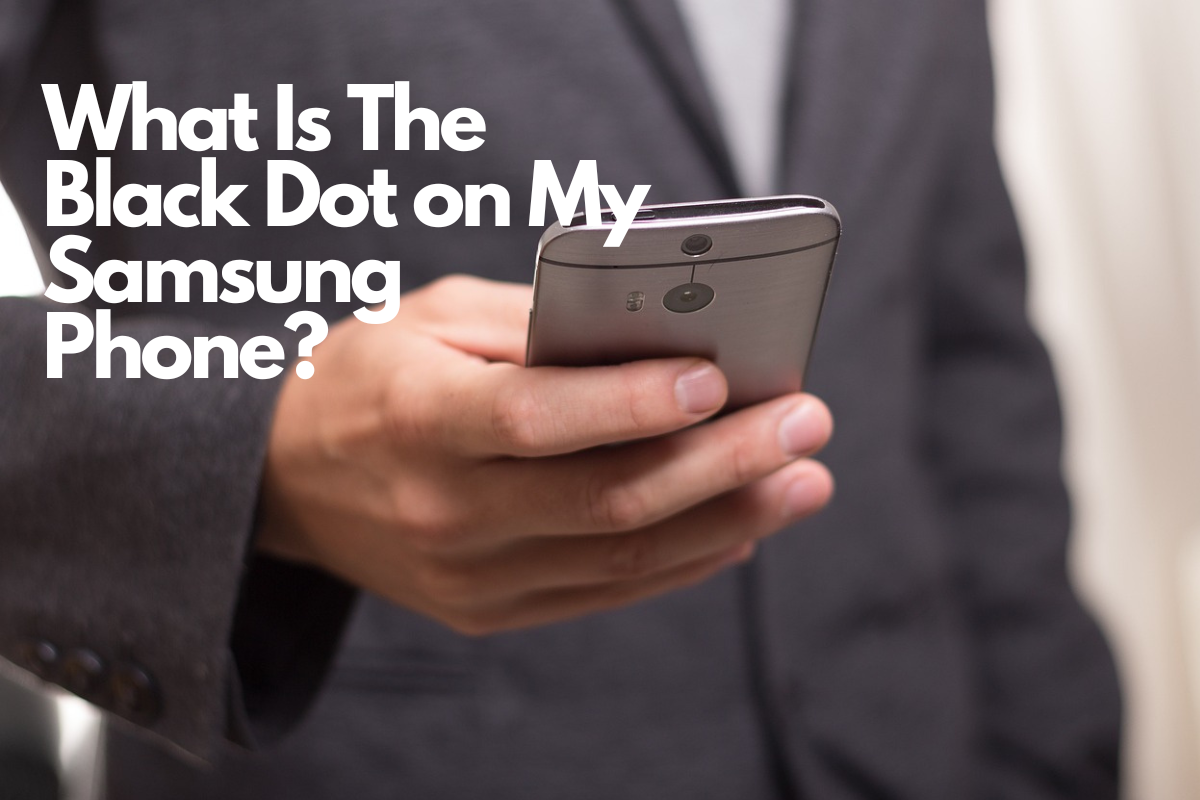Your cart is currently empty!

Decoding the Mystery: What Is The Black Dot on My Samsung Phone?
Ever wondered about that puzzling black dot on your Samsung phone? You’re not alone, as this odd feature has prompted many queries in the user community, leading to a variety of answers. However, the explanation is fairly straightforward. This guide aims to demystify the mystery behind this black dot, clarify its purpose, and walk you through some related topics.
Genesis: The Notification LED
Samsung’s earlier phones had a feature known as a Notification LED. It was a small light that blinked when you had a notification, missed call, or charging status update. However, with the advent of larger screens and Infinity displays, Samsung made the decision to remove the Notification LED.
So what’s with the mysterious black dot then, you might ask?
The Black Dot Revealed: A Proximity Sensor
The small black spot on most Samsung phones, residing near the top of the display, is not, contrary to popular belief, a remnant of the Notification LED feature. It is, in fact, a proximity sensor.
The proximity sensor is a small yet integral component in most modern smartphones, including your Samsung device. One of its main functions is to detect when the phone is held up to the user’s ear during a call, upon which it automatically turns off the display to prevent accidental touches. The sensor also helps conserve battery life as the screen is off during phone calls.
Functionality of Proximity Sensor
The proximity sensor functions with the help of an infrared LED, which is invisible to the naked eye. When you place the phone next to your face, the infrared light is reflected back to this sensor, signaling it to turn off the display.
A notable benefit is the prevention of accidental touches. When you’re on a call, you wouldn’t want your cheek to end the call or put the other person on mute. The proximity sensor is designed to handle this precise issue.
Interestingly, the proximity sensor is also used to keep your phone’s display off while it’s in your pocket or bag, preventing accidental operations and keeping the battery usage optimized.
What If The Black Dot Becomes Obtrusive?
As much as we appreciate the functionality of this small component, there might be times where this black dot seems to play foul by not allowing the screen to turn on after a call. If that’s the case, it is likely that your proximity sensor is malfunctioning, dirty, or obscured.
First, make sure there are no obstructions, such as a phone case or screen protector, covering the sensor. If the sensor is clean and unobstructed, but the issue continues, consider doing a soft reset or restarting your device.
If, however, your phone still misbehaves, your proximity sensor might be faulty, and it would be sensible to take your phone for servicing at a Samsung service center. A faulty sensor can be easily fixed or replaced by a professional.
Conclusion: Unveiling The Black Dot
While Samsung’s constant quest for technological advancement leads to features being added or removed, some remain essential, like the often misunderstood black dot. Although it might seem mysterious, the black dot adds to the diverse ways the gadget understands and interacts with its surroundings— in this case, preventing accidental touches when the device is against your ear or in your pocket.
Next time you notice the tiny black dot at the top of your Samsung phone, you’ll understand how crucial a tiny dot can be in delivering a comfortable user experience. Knowing what every sensor or feature on your device does can help you use them effectively and also troubleshoot if they ever go awry.
Leave a Reply